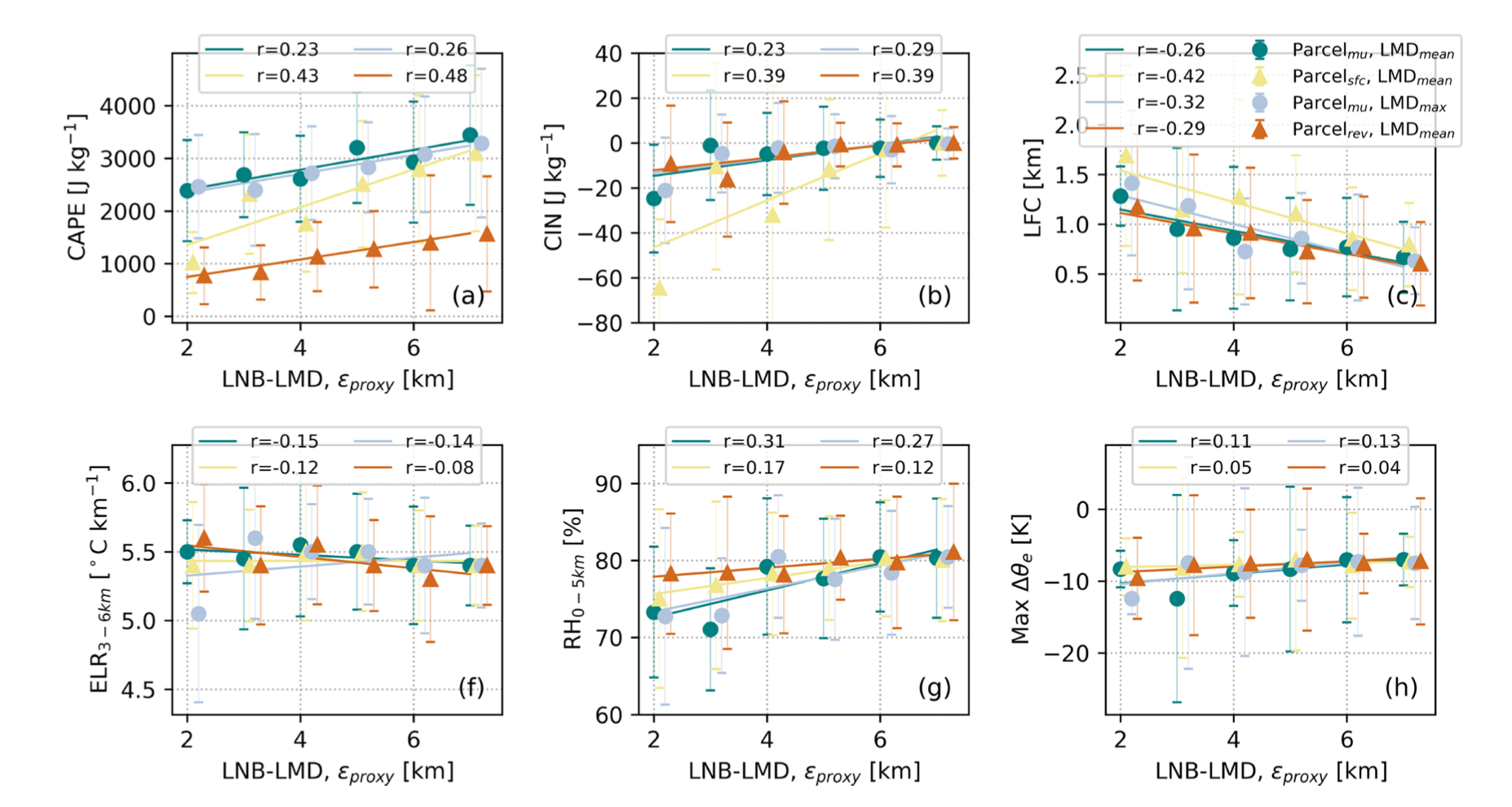Long-term ARM observations provide insights into tropical deep convective cloud growth
Submitter:
Wang, Die — Brookhaven National Laboratory
Jensen, Michael — Brookhaven National Laboratory
Area of research:
Cloud Processes
Journal Reference:
Science
Acting as atmospheric “elevators,” tropical deep convective clouds (TDCCs) transport heat, moisture, momentum, and chemical species vertically through the depth of the troposphere, driving the large‐scale atmospheric circulation. The strength and depth of this vertical transport depends on the convective updraft size and intensity, which is impacted by detailed internal cloud processes and interactions with the surrounding environment. Mixing of air between the environment and the cloud, entrainment/detrainment has been identified as a bottleneck for the representation of deep convection in model simulations across scales. One explanation for this continuing challenge is that observational constraints for model process improvement including entrainment rates, vertical mass fluxes, and cloud mass detrainment properties for TDCCs are extremely difficult to obtain.
Impact
This study advances our understanding of the factors that impact the growth of TDCCs through analysis of long-term cloud observations and their thermodynamic environment. Differences between the theoretical maximum convective cloud-top height and the observed height where cloud mass is detrained provide a measure of the processes that reduce convective updraft buoyancy (i.e., effective bulk convective entrainment) and drive TDCC depth. The relationships between the effective bulk convective entrainment and environmental variables provide guidance for convection parameterization development and serve as additional constraints for convective simulation in climate models.
Summary
In this study, we identify TDCCs with well‐observed forward anvils (i.e., detrainment levels) using long-term ARM profiling cloud radars at three ARM sites in the Tropical Western Pacific (TWP; i.e., Manus, Nauru, and Darwin) and three ARM Mobile Facility deployments in West Africa (Niamey, Niger), the Indian Ocean (Gan Island, Maldives), and the Amazon (Manacapuru, Brazil). We use the difference between the theoretical maximum convective cloud-top height (LNB; level of neutral buoyancy), and the observed level of maximum cloud detrainment (LMD) as a proxy for the effective bulk convective entrainment (εproxy). We find distinct differences among the different measurement locations. TDCCs over the TWP show higher LNBs but larger εproxy compared to their continental counterparts in the Amazon and West Africa. Oceanic conditions show larger convective available potential energy (CAPE) coupled with higher moisture at low levels, which favors larger εproxy. In contrast, the continental cases develop under higher convective inhibition, more unstable, and high wind shear conditions and show smaller offsets between LNB and LMD. Using a Random Forest regression algorithm, CAPE is associated with the highest feature importance score for predicting εproxy, followed by low‐level relative humidity. For continental cases, the low‐level wind shear also indicates higher importance. These observations and associated correlations provide important targets for convective simulation, and offer guidance for the explanatory variables most important for the parameterization of convective entrainment in large-scale models.


